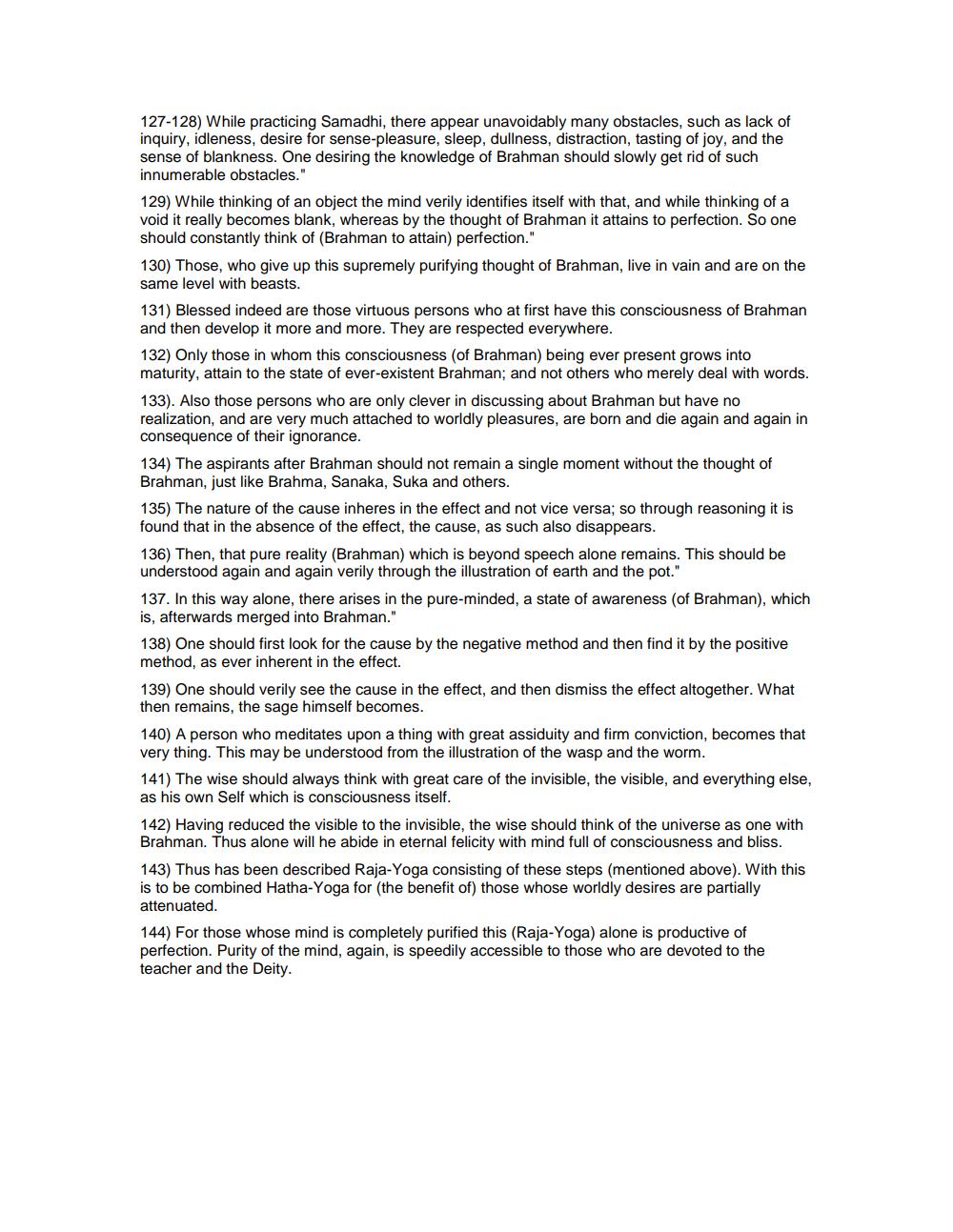Book Title: Direct Self Relization Author(s): Adi Shankaracharya Publisher: Unknown View full book textPage 8
________________ 127-128) While practicing Samadhi, there appear unavoidably many obstacles, such as lack of inquiry, idleness, desire for sense-pleasure, sleep, dullness, distraction, tasting of joy, and the sense of blankness. One desiring the knowledge of Brahman should slowly get rid of such innumerable obstacles." 129) While thinking of an object the mind verily identifies itself with that, and while thinking of a void it really becomes blank, whereas by the thought of Brahman it attains to perfection. So one should constantly think of (Brahman to attain) perfection." 130) Those, who give up this supremely purifying thought of Brahman, live in vain and are on the same level with beasts. 131) Blessed indeed are those virtuous persons who at first have this consciousness of Brahman and then develop it more and more. They are respected everywhere. 132) Only those in whom this consciousness (of Brahman) being ever present grows into maturity, attain to the state of ever-existent Brahman; and not others who merely deal with words. 133). Also those persons who are only clever in discussing about Brahman but have no realization, and are very much attached to worldly pleasures, are born and die again and again in consequence of their ignorance. 134) The aspirants after Brahman should not remain a single moment without the thought of Brahman, just like Brahma, Sanaka, Suka and others. 135) The nature of the cause inheres in the effect and not vice versa; so through reasoning it is found that in the absence of the effect, the cause, as such also disappears. 136) Then, that pure reality (Brahman) which is beyond speech alone remains. This should be understood again and again verily through the illustration of earth and the pot." 137. In this way alone, there arises in the pure-minded, a state of awareness (of Brahman), which is, afterwards merged into Brahman." 138) One should first look for the cause by the negative method and then find it by the positive method, as ever inherent in the effect. 139) One should verily see the cause in the effect, and then dismiss the effect altogether. What then remains, the sage himself becomes. 140) A person who meditates upon a thing with great assiduity and firm conviction, becomes that very thing. This may be understood from the illustration of the wasp and the worm. 141) The wise should always think with great care of the invisible, the visible, and everything else, as his own Self which is consciousness itself. 142) Having reduced the visible to the invisible, the wise should think of the universe as one with Brahman. Thus alone will he abide in eternal felicity with mind full of consciousness and bliss. 143) Thus has been described Raja-Yoga consisting of these steps (mentioned above). With this is to be combined Hatha-Yoga for (the benefit of) those whose worldly desires are partially attenuated. 144) For those whose mind is completely purified this (Raja-Yoga) alone is productive of perfection. Purity of the mind, again, is speedily accessible to those who are devoted to the teacher and the Deity.Page Navigation
1 ... 6 7 8
